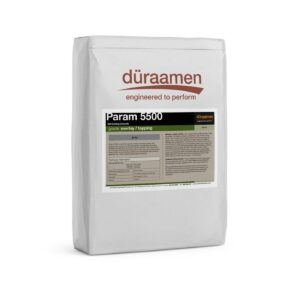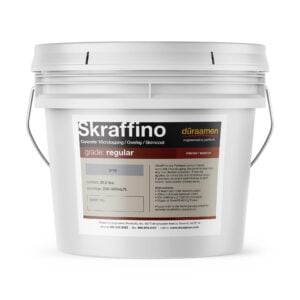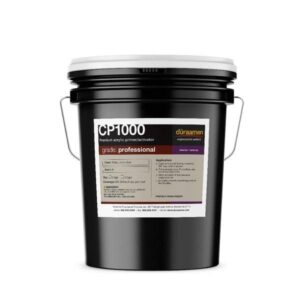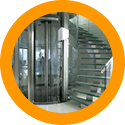Your driveway is the gateway to your home, serving as both a functional surface and a part of your property’s curb appeal. Over time, the constant exposure to the elements, heavy loads, and everyday wear and tear can lead to cracks, surface damage, and an overall worn look. If your concrete driveway is showing signs of aging or damage, it may be time to consider resurfacing it. In this comprehensive guide, we will explore everything you need to know about concrete driveway resurfacing, including the process, materials, and benefits.
The Need for Concrete Driveway Resurfacing
Concrete driveways are a popular choice due to their durability and longevity. However, even the most well-constructed concrete driveways can experience wear and tear over time. This can result from various factors, including:
Weather Conditions: Concrete driveways are exposed to the elements year-round. The freeze-thaw cycles in cold climates, along with the harsh rays of the sun, can cause surface damage.
Heavy Loads: Driveways must support the weight of vehicles, from everyday cars to larger trucks. This constant pressure can lead to structural damage over time.
Cracks: Small cracks can develop on the surface of your concrete driveway due to minor damages and settling. If not addressed, these cracks can worsen and lead to larger issues.
Oil Spills: Oil spills, especially from vehicles, can leave unsightly stains on your driveway. If left untreated, these stains can penetrate the concrete surface.
Porous Material: Concrete is porous, which means it can absorb water, oil, and other liquids. Over time, this can lead to damage and deterioration.
Aging: As your driveway gets older, it may lose its smooth surface and begin to show signs of wear and tear.
The Benefits of Concrete Driveway Resurfacing
Concrete driveway resurfacing is the process of applying a new layer of material over your existing driveway to restore its appearance, structural integrity, and functionality. Here are some key benefits of resurfacing your concrete driveway:
1. Cost-Effective Solution
Compared to a full driveway replacement, resurfacing is a cost-effective alternative. It allows you to give your driveway a fresh look and address minor issues without the expense of a new driveway installation.
2. Improved Aesthetics
Resurfacing provides an opportunity to enhance the overall look of your driveway. You can choose from a variety of finishes, textures, and colors to achieve the desired aesthetic for your property.
3. Structural Restoration
If your driveway has small cracks or surface damage, resurfacing can help restore its structural integrity. This process addresses minor issues before they turn into major ones.
4. Preventative Measures
Resurfacing acts as a preventative measure to protect your driveway from further damage. It creates a protective layer that helps shield the underlying concrete from Mother Nature’s forces.
5. Longevity
When done correctly, concrete driveway resurfacing can extend the life of your driveway for many years. It’s an investment in the longevity of your property’s driveway.
6. Fast Turnaround
Compared to driveway replacement, resurfacing is a quicker process. It minimizes disruptions to your daily life, as the project can often be completed in a matter of days.
7. Eco-Friendly
Resurfacing your existing driveway reduces the need for new materials and construction, making it an eco-friendly choice.
The Process of Concrete Driveway Resurfacing
Concrete driveway resurfacing is a multi-step process that involves careful planning and execution. Here’s a breakdown of the typical steps involved in resurfacing your concrete driveway:
1. Assessment
The first step is to assess the condition of your existing concrete driveway. This involves looking for surface damage, cracks, and structural issues. The assessment helps determine whether resurfacing is a suitable option.
2. Cleaning
Before resurfacing, it’s crucial to ensure the existing surface is clean and free from debris. A pressure washer is often used to remove dirt, stains, and loose material from the driveway.
3. Surface Repair
Any cracks, small holes, or surface damage should be repaired at this stage. A professional may use a putty knife to fill these imperfections with the appropriate patching material. For larger cracks and structural damage, further measures may be necessary.
4. Expansion Joints
Expansion joints are added or maintained to allow for the natural movement of the concrete surface. This helps prevent future cracking and damage.
5. Application of Resurfacing Material
The resurfacing material, often a self-leveling concrete or concrete overlay, is applied evenly to the entire surface of your driveway. This material provides a fresh, smooth surface.
6. Decorative Options
Depending on your preferences, you can add decorative touches to your resurfaced driveway. Options include stamped patterns, colored concrete, and even a decorative apron near the entrance.
7. Sealing
A concrete sealer is applied to protect the resurfaced driveway and enhance its longevity. Sealing also enhances the surface’s appearance.
8. Curing
The resurfaced driveway needs time to cure properly. Curing times can vary based on the specific materials used, weather conditions, and other factors. It’s essential to follow the recommendations of your concrete contractor.
9. Regular Maintenance
Once the resurfacing process is complete, regular maintenance is essential to ensure the driveway remains in good condition. This includes cleaning and resealing as needed.
Choosing the Right Resurfacing Material
Selecting the right resurfacing material for your concrete driveway is a critical decision. The choice of material can significantly impact the longevity, aesthetics, and performance of your driveway. Here are some popular resurfacing materials:
1. Self-Leveling Concrete
Self-leveling concrete is a fluid mixture that, as the name suggests, levels itself. It’s an excellent choice for uneven concrete surfaces, as it can create a smooth, level surface. This material can also be used for decorative purposes, allowing for various finishes and designs.
2. Concrete Overlay
A concrete overlay is a thin layer of concrete that is applied over the existing surface. It can provide a fresh look and cover minor imperfections. Concrete overlays are versatile and can be customized with different textures, colors, and finishes.
3. Polyurethane Foam
Polyurethane foam, while less common than self-leveling concrete and overlays, is a suitable choice for areas with soft or uneven surfaces. It’s often used for concrete slab jacking, where foam is injected beneath the existing concrete to raise and level it.
4. Concrete Resurfacer
Concrete resurfacer is a specialized material designed for resurfacing concrete floors. It’s a strong and durable option that can restore your driveway’s appearance and structural integrity.
When choosing a resurfacing material, it’s crucial to consider factors like your driveway’s current condition, the overall look you desire, and the local climate. Consulting with a professional paver or concrete contractor can help you make the best choice for your specific needs.
DIY vs. Professional Resurfacing
While some property owners may be tempted to take on driveway resurfacing as a DIY project, it’s essential to consider the complexities and potential safety hazards involved. Here are some factors to consider when deciding between a DIY approach and hiring a professional:
DIY Driveway Resurfacing
Cost-effective but labor-intensive.
Suitable for small repairs and cosmetic improvements.
Limited to basic resurfacing materials.
Requires specialized tools and equipment.
Potential for uneven surfaces and a less professional finish.
Professional Resurfacing
Offers peace of mind and expertise.
Access to a wide range of resurfacing materials and techniques.
Faster turnaround and minimized disruptions.
Ideal for addressing structural issues and ensuring a level surface.
Guarantees a high-quality result with long-term benefits.
While a DIY approach may be appropriate for minor cosmetic enhancements or small areas, professional resurfacing is the best choice for addressing significant issues and achieving a lasting result.
When Is the Best Time for Driveway Resurfacing?
The best time for driveway resurfacing largely depends on your local climate. However, there are some general considerations to keep in mind:
1. Mild Weather: Ideally, driveway resurfacing should be done during a period of mild weather. Extreme heat or cold can affect the curing and performance of the resurfacing material. Spring and fall are often suitable seasons for resurfacing.
2. Dry Conditions: Avoid scheduling driveway resurfacing during rainy or wet seasons. Moisture can interfere with the application and curing process. Wait for a dry spell before starting the project.
3. Plan Ahead: Schedule your driveway resurfacing project well in advance. It’s best to allow ample time for the assessment, preparation, and completion of the project.
4. Consider Local Factors: Consult with a local concrete contractor to determine the best time for resurfacing based on your region’s climate and weather patterns.
Additional Factors to Consider
In addition to the factors mentioned above, here are some other considerations when planning your concrete driveway resurfacing project:
1. Driveway Material: The type of material you choose for resurfacing can impact the overall cost and durability. Consider the price points and advantages of each option.
2. Existing Surface: The condition of your existing driveway is a crucial factor in determining the best approach for resurfacing.
3. Property Owners: If you live in a homeowners’ association (HOA) or a community with specific guidelines, check if there are any restrictions or requirements for driveway resurfacing.
4. Construction Project: If you have other construction projects planned for your property, it’s a good idea to schedule driveway resurfacing as part of the overall project.
5. Heavy Loads: If you anticipate heavy loads, such as trucks or RVs, regularly using your driveway, discuss this with your contractor to ensure the resurfacing material can withstand such use.
6. Mother Nature: Be prepared for unexpected weather changes. Sudden rain or an approaching winter storm can delay your project. Flexibility and preparation are key.
7. The First Thing People See: Your driveway is one of the first things visitors notice when they arrive at your home. Resurfacing it can create a great first impression.
Conclusion
Resurfacing your concrete driveway is an excellent way to revitalize the appearance, restore its structural integrity, and extend its lifespan. Whether you’re dealing with minor cracks, surface damage, or simply want to enhance the curb appeal of your property, concrete driveway resurfacing offers an affordable and effective solution.
Remember that the choice of resurfacing material, the timing of the project, and whether to go the DIY or professional route all play a significant role in the success of your driveway resurfacing project. With the right approach and the guidance of a professional, you can enjoy a beautiful, long-lasting driveway that adds value to your property and provides years of reliable service.






